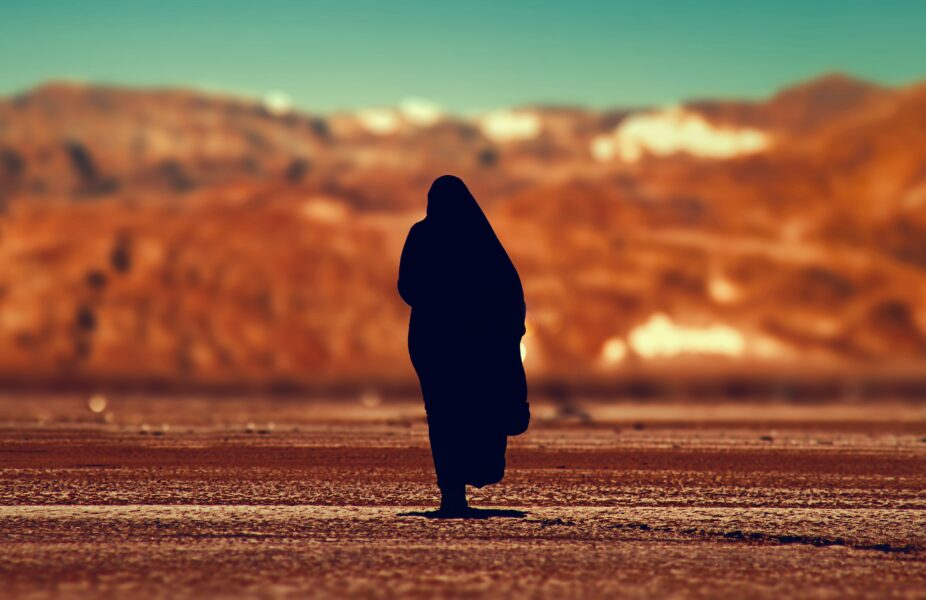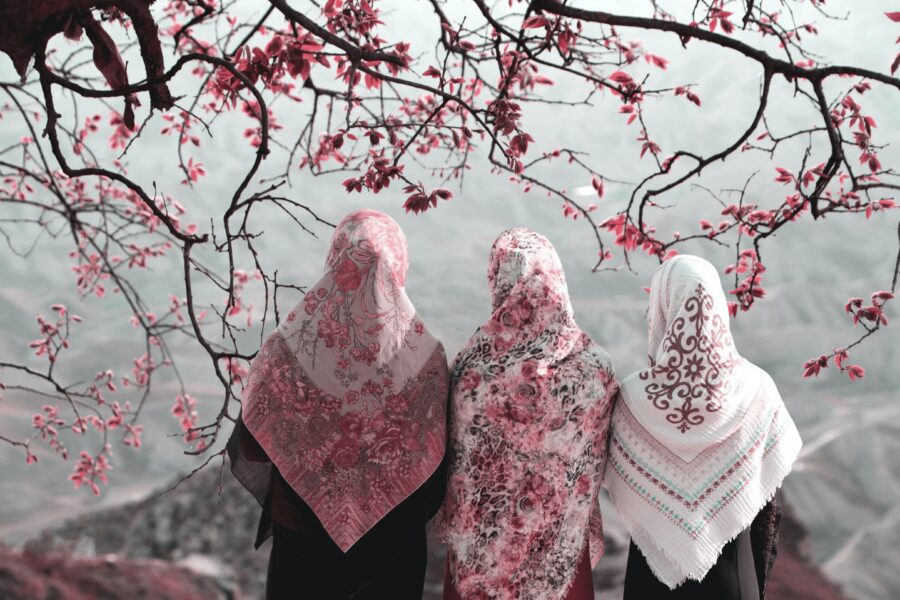Dressed in a purple hijab, a matching backpack and purple trainers, Hannah, a 15-year-old teenage Muslim girl, is making her way to see her friends. Hannah is happy to dress how she does; she does so because she wants to adhere to the teachings of her faith.
Hannah is me, and you. Hannah is our nieces, daughters and friends. Hannah is often spoken about by the media, by peers and by others. Being a Muslim teenager in a Western world can be tricky. You’re often pulled in different directions, both wanting to please your Creator, whilst also being influenced by those around you.
It is often that teenage Muslims, of both genders, are spoken for – more so the women because they are labelled as ‘oppressed.’ If they are covered, they are perceived as oppressed and unable to speak on their own behalf. However, the reality is far from the misconception that is portrayed.
On International Day of the Girl, we highlight the important role young women play and have played within Islam. We highlight how they are respected, cherished, and an important fabric of our society and world. We will look at examples of young women in the Prophet’s (saw) time who played an integral part of society and are an inspiration for us, centuries on, today.
Dressed in a purple hijab, a matching backpack and purple trainers, Hannah, a 15-year-old teenage Muslim girl, is making her way to see her friends. Hannah is happy to dress how she does; she does so because she wants to adhere to the teachings of her faith.
Hannah is me, and you. Hannah is our nieces, daughters and friends. Hannah is often spoken about by the media, by peers and by others. Being a Muslim teenager in a Western world can be tricky. You’re often pulled in different directions, both wanting to please your Creator, whilst also being influenced by those around you.
It is often that teenage Muslims, of both genders, are spoken for – more so the women because they are labelled as ‘oppressed.’ If they are covered, they are perceived as oppressed and unable to speak on their own behalf. However, the reality is far from the misconception that is portrayed.
On International Day of the Girl, we highlight the important role young women play and have played within Islam. We highlight how they are respected, cherished, and an important fabric of our society and world. We will look at examples of young women in the Prophet’s (saw) time who played an integral part of society and are an inspiration for us, centuries on, today.

Saving their lives
In ancient Arabia, when a mother would give birth to a female child, people would bury them alive, out of fear or shame. However, the Qur’an made it clear that it was an atrocious act, and highlighted the sanctity of life, be it a male or female soul.
“Whenever one of them is given the good news of a baby girl, his face grows gloomy, as he suppresses his rage. He hides from the people because of the bad news he has received. Should he keep her in disgrace, or bury her ˹alive˺ in the ground? Evil indeed is their judgment!” (Qur’an, 16:58-59)
“When the female (infant), buried alive, is questioned, for what crime she was killed?” (Qur’an, 81:8-9)
These verses of revelation in themselves show the esteemed worth of life, including that of women. Islam prevented such horrendous traditions and empowered women with their rights.
A’isha bint Abu Bakr
A’isha (ra) was the youngest wife of the Prophet (saw) and is one of the most influential and inspirational females in Islamic history. She got married to the Prophet (saw) at a young age, yet despite that, showed wisdom, knowledge and a honorable personality, well beyond her years. Her father was the Prophet’s (saw) best friend and closest companion – Abu Bakr (ra).
Her marriage to the Prophet (saw) was filled with love and should serve as an example of us all. The Prophet (saw) passed away with his head in her lap, and was known to shower her with love and compassion during their marriage.
She said of the incident: “It was one of the favours of Allah towards me that Allah’s Messenger (saw) passed away in my house, while he was leaning against my chest…” (Bukhari).
She played an integral role in the narration of hadith and is said to have narrated 2,210 hadith which are still studied and narrated today. She is recognised as one of the great Islamic scholars and continued to serve the Ummah 44 years after the Prophet’s (saw) death.
A’isha’s (ra) young age did not stop her from being an example for us all. She was brave, fierce and a woman who we can gain strength from. Even when her dignity was in question, Allah spoke of her in the Quran to defend her honour, from above the seven heavens.
Fatima bint Muhammad (saw)
Fatima was the beloved, youngest daughter of the Prophet (saw) and his wife Khadijah (ra). She is known for her devotion and commitment to her family. She showed strength throughout the turmoil she and her family were put through, because of their acceptance of the truth. She was around 5 years old when her father (saw) became a Prophet.
She was at the centre of supporting her family and friends during the early days, where Muslims were being mistreated and tortured.
Even whilst being in her teenage years, she was a pillar of belief and a rock to her loved ones. She fought and protected her father from the likes of oppressors like Abu Jahl, and later went on to marry ‘Ali (ra). Her loyalty and commitment continued as a wife, as she had been as a daughter, and her love for her father (saw) and Allah did not falter or weaken at any moment.
At the tender age of five, to even our teenage years, we remain in a bubble, shying away from responsibility or struggling to cope with the pressures of the world. However, Fatima had no choice but to step up, to show up and to shower her close loved ones with unconditional support, love and commitment.
Asma bint Abu Bakr
Asma was also a daughter of Abu Bakr (ra) and known for her bravery, strength and commitment. She was one of the early reverts to Islam, and her marriage was also one of the earliest of the believers.
Asma used to carry food to the Prophet (saw) and her father, as they secretly made hijrah to Madinah, in the dark of the night. For this, she earned the title of Dhat an-Nitaqayn, from the Prophet (saw), meaning “The Possessor of the Two Belts”, as she would tie the foodstuff with her two belts. Asma and her husband az-Zubair were one of the first to make Hijrah, leaving behind their lives for the sake of Allah.
The couple raised several children, and her style of motherhood was known throughout history as raising pious and Islamic children. She was renowned for her bravery once again, when she played an instrumental role in the Battle of Yarmuk.
Her eldest child, Abdullah ibn Zubair, inherited these great qualities from his parents and participated in many great battles, eventually becoming martyred when he took a stand against Yazid Asma herself passed away a few days after her son, at the age of 100.
Follow their lead
Fatima, Aisha and Asma (ra) are examples of how even at such tender ages, young women within the Prophet’s (saw) time were brave, strong and committed to both their faith, and their responsibilities. They didn’t shy away from the truth, and were not discriminated against by the believers because of their gender.
They were respected, trusted and had rights placed on them, and for them. Islam came to empower, protect and serve women, just as it has done with men. Although our way of life may not align with the world we live in, it’s important to remember your role as a young woman, as a believer in Islam, and embody the strength of those before us.
